- Best VBScript Interview Questions & Answers
- Flutter vs React Native - What's the Difference?
- Flutter vs Ionic - What's the Difference?
- QuickBooks Interview Questions
- Windows Administrator Interview Questions
- Power Automate – Tutorial
- Redis Interview Questions
- TestRail Tutorial
- Rust Tutorial
- Rust Interview Questions
- Workato Interview Questions
- Test Page
- dummy page
Every organization, whether working at a mid-scale or a large-scale, requires somebody to manage and monitor the server to maintain the workflow. This results in the need for a Windows Server or a system administrator who holds adequate potential in completing this job.
However, even if you have gained enough skills and knowledge about an industry, the questions coming in an interview could still be tricky. Thus, it’s highly important that you go through the latest Windows Server interview questions for beginners and professionals to prepare well.
In this post, find all the latest interview questions and expand the horizons of your knowledge.
Windows Server 2024 (Updated) Questions and Answers have been divided into stages they are:
Top 10 Windows Server Interview Questions
- What are some of the roles of FSMO (flexible single master operations)?
- Explain the types of roles in the Windows Server.
- What does it mean by “tattooing” the Registry?
- What is the goal of installing local DNS servers?
- What is the Authoritative Restore of Active Directory?
- Define Hyper-V.
- Explain what is INODE.
- Define APIPA.
- Explain Group Policy Objects (GPO) and name their types.
- Define the Visio diagram.
Windows Server Interview Questions For Freshers
1. What is Windows Server?
A series of enterprise-class server operating systems built for end-users to share resources or services with numerous users are referred to as Windows servers. This gives you a lot of control over your data, applications, and business networks.
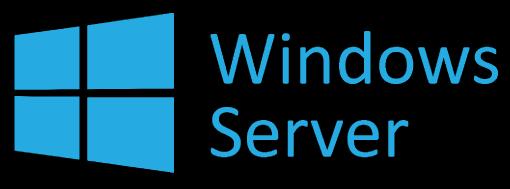
2. What is an Active Directory?
Active Directory is a way for a library's inventory to be organized so that assets like computers and client profiles can be found. It essentially controls the framework through Domain Controllers that are present in several zones and use the Active Directory database.
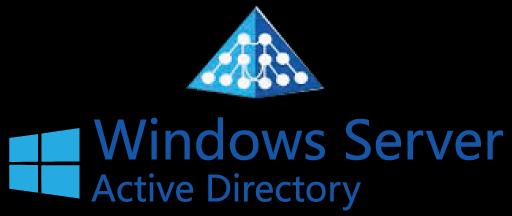
A component of the restrictions includes dynamic association with several land zones, checking machines and customers in the space provided by Windows, and copying Active Directory using the Domain Controller. These lines will be returned to all Domain Controllers due to this.
| Want to Upgrade your server skills in the "Windows Server Administration" domain? Check out the "Windows Server Administration Online Training" and get certified today |
3. What are some of the roles of FSMO (flexible single master operations)?
- Schema Master is a forest-wide role and is available only in each forest
- Domain Naming Master, like Schema Master is also a forest-wide role
- Infrastructure Master
- RID Master
- PDC

4. What is the purpose of deploying a local DNS server?
Local mapping of fully qualified domain names to IP addresses is provided by a DNS server. Local DNS servers can send record information to distant DNS servers to resolve remote requests linked to domain names on your network.

5. Explain what is Primary, Secondary and Stub zone in the Windows DNS server?
DNS stands for domain name system, and it is a table that is used to match domain names to IP addresses.
The three types of zones in the Windows DNS server are as follows:
- Primary Zone: A primary zone is one that can be updated directly on the DNS server that hosts the zone.
- Secondary Zone: This is a secondary server that functions as a load balancer and provides fault tolerance for the primary server. This is typically a read-only file that is stored on a different DNS server.
- Stub Zone: This includes name server and SOA records, which aid in the reduction of DNS search orders.
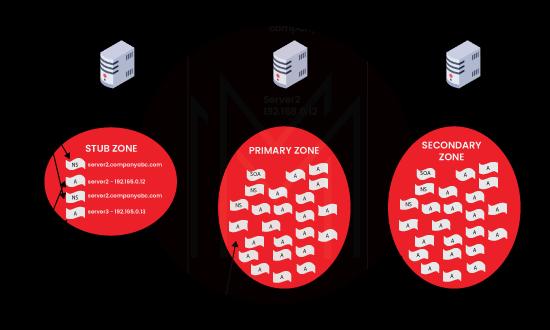
6. Mention how many types of queries DNS does?
The types of queries DNS does are
- Iterative Query:
In the Iterative Query, the requester asks the DNS server for the feasible answer it has. If DNS Server does not contain the IP address, it will return the definitive name server or the TLD Name Server. - Recursive Query
In the Recursive query, the system requests the IP address of confirmation that the DNS Server does not know that IP address. - Non-recursive
The DNS Resolver utilises the query for finding the IP address that does not have in its cache. These are restricted to the single request to restrict the network bandwidth utilisation.

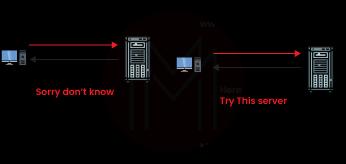
7. Explain the types of roles in the Windows Server.
The Roles include,
- Firstly, Active Directory Lightweight Directory Services (ADLDS)
- Secondly, Active Directory Rights Management Services (ADRMS)
- Thirdly, the Application Server
- Fourthly, Active Directory Certificate Services (ADCS)
- Active Directory Domain Services (ADDS)
- Then, Active Directory Federation Services (ADFS)
- DHCP Server
- Next, DNS Server and FAX Server
- After that, File and Storage Services
- Hyper-V, Print and Document Services
- Then, Network Policy and Access Services
- After that, Remote Access and Remote Desktop Services
- Next, Volume Activation Services
- Web Server (IIS)
- Lastly, Windows Deployment Services (WDS) and Windows Server Update Services (WSUS)
8. Explain what IntelliMirror do.
IntelliMirror assists users in reconciling desktop settings, apps, and saved files, particularly for individuals who travel between workstations or work offline.
9. What does it mean by “tattooing” the Registry?
The phrase "tattooing" the registry means the ability to edit and examine user preferences that are not kept in the registry's maintained sections. The user choice will continue in the registry even if the group policy is altered or withdrawn.
10. Define DNS.
DNS stands for Domain Name System, and so it refers to the telephone directory on the Internet. When consumers type domain names like 'google.com' into web browsers, DNS finds the correct IP address. In order to retrieve website data, browsers use these addresses to communicate with origin servers or CDN edge servers.
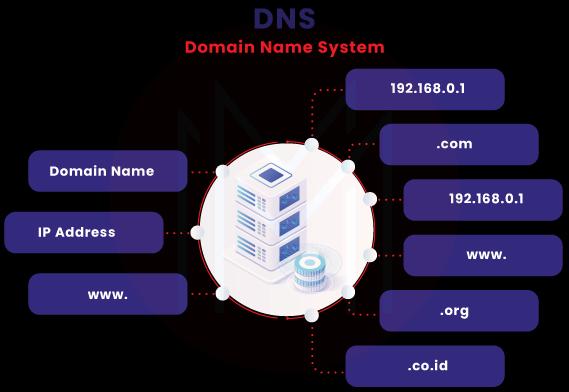
11. Why is it important to deploy local DNS servers?
A local DNS server aids in the translation of domain names to IP addresses on a local level. This also gives record details to remote DNS servers for addressing remote requests connected to domain names on your network.
12. What do you understand about Domain Controllers?
In Windows-based operating systems, a domain controller is a server that provides secure authentication of users and computers. However, this is the database's core for storing user account information and enforcing security. A domain controller, for example, grants the user authorization to allow or restrict access to a certain folder within a domain.
13. What is the goal of installing local DNS servers?
A local DNS server allows fully competent domains to be mapped to IP addresses on a local level. Local DNS servers can provide record data to distant DNS servers to resolve requests for domains on the network.
14. What do you understand by the terms trees, forest, and domain?
Forests, trees, and domains are the logical divisions of an Active Directory network.
- A domain is a conceptual group of networked devices, such as pcs, customers, and gadgets, which share the same active directory database.
- The term "tree" refers to a set with one or more domains. A contiguous namespace linked in a transitive trust hierarchy can also be included.
- The forest refers to a group of domains that share a global catalog, logical structure, directory configuration, and directory schema. It also establishes user, group, and computer security boundaries.
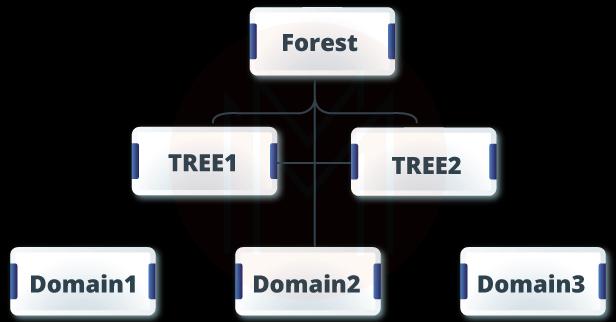
15. What is the Non-authoritative Restore of Active Directory?
When a domain controller is recovered first, then the Active Directory objects are continually updated by reproducing the latest edition of those objects from the other domain controllers in the domain, and this is known as a non-authoritative restoration.
Windows Server Interview Questions and Answers for Experienced
1. What is the Authoritative Restore of Active Directory?
The authoritative technique restores the DC file to the condition it was in at the point of the backups, then overwrites all other DCs to match the restored DC.
2. What information is required when TCP/IP is configured on Windows Server?
You must supply the IP address and subnet mask when configuring a TCP/IP client for an IPv4 client.
3. Explain what it means to Caching-only servers in terms of DNS?
A Caching-only DNS server responds to queries with data based on the information in its DNS cache.
4. To check TCP/IP configurations and IP connectivity, what are the two command-line utilities that can be used?
- Ipconfig: The function ipconfig could be used to verify the computer's IP setup, as well as to renew the client's IP address if it is provided by a DHCP server.
- Ping: The ping command is used to examine the connectivity between the local computer and any other computer device on the network.
5. Define Hyper-V.
Microsoft's Hyper-V virtualization program is referred to as Hyper-V. This is used to control and minimize hardware expenses as well as enhance productivity by creating multiple virtual machines on a single physical server.
6. Where is the AD database stored?
AD database is saved in %systemroot%/ntds. Files that control the AD structure are
- ntds.dit
- edb.log
- res1.log
- res2.log
- Edb.chk
7. Explain what is INODE?
INODE is a pointer to a block on the disk that is unique, and it stores file metadata.
In simple terms, it is a one-of-a-kind number assigned to a file in a UNIX-like operating system.
| Related Article: Unix Interview Questions |
8. Define DHCP.
The Dynamic Host Configuration Protocol (DHCP) is a protocol for automatically allocating IP addresses throughout a network based on a set scope.
9. Define APIPA?
APIPA is a local web-based DHCP failover system. When DHCP servers are unavailable, APIPA can be used to retrieve IP addresses for DHCP clients. Except for Windows NT, APIPA is included in all new versions of Windows. APIPA assigns IP addresses in the private range 169.254.0.1 to 169.254.255.254 when a DHCP server fails.
10. Explain what a server manager is?
In Windows Server, Server Manager is a management console (a workstation that monitors and controls a network locally or remotely). It enables us to provision and maintain both local and distant Windows-based servers from their workstations without requiring physical access or activating Remote Desktop Protocol (RDP) connections to each server.
11. Explain Group Policy Objects (GPO) and name their types.
GPO refers to a workplace environment that maintains client records as well as computer records. This aids in the explanation of the programming setup, security options, upkeep options, library-dependent arrangements, folder redirection options, and content options. In addition, there are two kinds of GPOs:
- Firstly, Local GPO. These are kept on closed devices.
- Secondly, Non-local GPO. These can be accessed from the Active Directory and are kept on a domain controller.
12. What do you understand about RAID in Windows Server?
RAID stands for Redundant Array of Independent Disks, and it's a system for storing identical data in many locations. This strategy helps with fault tolerance and increasing storage capacity. It does, however, allow you to aggregate one or more volumes for access via a single drive letter on different drives.
13. Differentiate Windows and Windows Server.
The Windows Server operating system was released for server systems such as workstations, racks, towers, and so on. This allows numerous users to log in and work at the same time. It also features a CPU (64 cores), cores (320), and RAM (512 MB) (24TB).
Windows OS was released for a variety of user systems, including desktops, laptops, tablets, smartphones, and gaming consoles. Multiple user accounts can be created in this manner, but only one user can log in at any given time. This also has a restricted CPU(2), core(256), and RAM support (2TB).
14. Define the Visio diagram.
Visio is a Microsoft Windows diagramming software that enables people to create building plans, control charts, visualizations, flow diagrams, organization charts, maps, and more. It comes as part of the Microsoft Office software suite.
15. Define WINS server
Windows Internet Name Service servers are WINS servers that map IP addresses to NetBIOS names. Companies can use the computer's name rather than the IP address to access resources. This system can also function as a WINS server, keeping track of other computers' IP addresses and names on the network.
Conclusion
Now that you have all the latest Windows server interview questions, make sure you don’t skip anything during the preparation. When in an interview room, you obviously would want to sound skilful and knowledgeable. So, read through every question cautiously and crack the interview seamlessly.
 On-Job Support Service
On-Job Support Service
Online Work Support for your on-job roles.

Our work-support plans provide precise options as per your project tasks. Whether you are a newbie or an experienced professional seeking assistance in completing project tasks, we are here with the following plans to meet your custom needs:
- Pay Per Hour
- Pay Per Week
- Monthly
| Name | Dates | |
|---|---|---|
| Windows Networking Training | Jan 17 to Feb 01 | View Details |
| Windows Networking Training | Jan 20 to Feb 04 | View Details |
| Windows Networking Training | Jan 24 to Feb 08 | View Details |
| Windows Networking Training | Jan 27 to Feb 11 | View Details |










